Numerical Design of Granular Support for Three-Way Catalyzed Solid- and Porous-Particles Membrane Filters
Abstract
:1. Introduction
2. Simulation Methods
2.1. 3D GPF Structure with Modification of the Granular Support for Supporting Membrane
2.2. Filtration Simulation Methodology
- 1.
- Definition of a porous structure model: The simulation employs a porous structure obtained through either scanned images of a real structure (as outlined in Section 2.1) or generated within the software (GeoDict 2022, MATH 2 MARKET). Subsequently, the substrate’s properties, such as the Hamaker constant, are defined to facilitate subsequent calculations in the particle clogging step.
- 2.
- Fluid flow computation: This study adopts a one-way coupling approach for fluid flow computation. The velocity profile was employed for a single batch of particle trapping and recalculated in the subsequent batch, taking into account the presence of trapped particles. Consequently, it is reasonable to assume that the flow is stationary, i.e., it does not change over time. Moreover, the fluid is assumed to be a Newtonian fluid and incompressible due to the moderate flow rate. The fluid flow through the pores is described by the stationary Navier–Stokes equations and the continuity equation shown in the following equations:Here, represents the fluid density, denotes dynamic viscosity, is the velocity vector, indicates the pressure, and is the external force acting on the fluid.
- 3.
- Particle tracking: In this step, particles are tracked through the fluid flow field elucidated in Step 2. Within each batch, particles are treated as independent objects and do not interact with each other. Consequently, a large number of particles could result in significant volume loss due to particle overlap. The movement of particles is governed by the momentum equation, expressed as:Mathematically, this can be written as:Particle momentum = stoke drag + external forces.Here, represents particle mass, denotes particle velocity, signifies time, is dynamic viscosity, represents particle radius, indicates Cunningham correction [13], represents the fluid velocity, represents diffusivity, represents the 3D-Wienber measure, represents the particle charge, represents the electric field, and represents the external force, such as the gravity force.
- 4.
- Particle clogging: The particle clogging model employed in this study incorporates the Hamaker attraction, a form of Van der Waals attraction. Mathematically, it can be expressed as:Here, H11 is the Hamaker constant of each pair of particles, R is a particle radius, and a0 is an adhesion distance or equilibrium spacing between the particle and the surface (assumed to have a typical value of 4 Å).
2.3. Simulation Procedure for Membrane Fabrication on Granular Substrates and Soot Trapping on Membranes
2.4. Simulation Procedure for Porous-Particle TWC Membrane Formation
3. Results and Discussion
3.1. Soot Trapping on Membrane
3.2. Optimization of Granular Substrate for Membrane Fabrication
3.3. Optimization of the Porous-Particle Membrane
4. Conclusions
Author Contributions
Funding
Institutional Review Board Statement
Data Availability Statement
Acknowledgments
Conflicts of Interest
References
- Euro 7 Emission Standards; Euro emission standards. European Union, tentative of 2025. European Commission: Brussels, Belgium, 2022.
- Boger, T.; Rose, D.; He, S.; Joshi, A. Developments for future EU7 regulations and the path to zero impact emissions—A catalyst substrate and filter supplier’s perspective. Transp. Eng. 2022, 10, 100129. [Google Scholar] [CrossRef]
- Sanui, R.; Hanamura, K. Electron microscopic time-lapse visualization of surface pore filtration on particulate matter trapping process. J. Microsc. 2016, 263, 250–259. [Google Scholar] [CrossRef] [PubMed]
- Sanui, R.; Hanamura, K. Scanning Electron Microscopic Visualization of Transition from Surface Pore Filtration to Cake Filtration inside Diesel Particulate Filter Walls; SAE Technical Paper 2015-01-1018; SAE: Warrendale, PA, USA, 2015. [Google Scholar]
- Suteerapongpun, T.; Hanamura, K. Numerical Simulation of Soot Trapping Process and Manufacturing of Three-Way Catalyzed Membrane Filter. Int. J. Automot. Eng. 2021, 13, 38–45. [Google Scholar] [CrossRef] [PubMed]
- Suteerapongpun, T.; Kitagawa, Y.; Srilomsak, M.; Hanamura, K. Development of Membrane Filter Made of Alumina and Silver-Palladium Particles for High-Filtration Efficiency, Low-Pressure Drop and Low-Soot Oxidation Temperature. Int. J. Automot. Eng. 2020, 11, 151–158. [Google Scholar] [CrossRef] [PubMed]
- Nakajima, S.; Sanui, R.; Hanamura, K. Soot Trapping by High-permeability Porous Membrane Filter Made of Aggregates of Alumina Nanoparticles. Int. J. Automot. Eng. 2017, 8, 105–111. [Google Scholar] [CrossRef] [PubMed] [Green Version]
- Preechar, K. Microscopic Visualization and Characterization of Particulate Matter Trapping and Oxidation in Diesel Particulate Filters and Membrane Filters. Ph.D. Thesis, Tokyo Institute of Technology, Tokyo, Japan, 2010. [Google Scholar]
- Le, P.H.; Kitamoto, Y.; Cao, K.L.A.; Hirano, T.; Tanabe, E.; Ogi, T. Synthesis of macroporous three-way catalysts via template-assisted spray process for enhancing mass transfer in gas adsorption. Adv. Powder Technol. 2022, 33, 103581. [Google Scholar] [CrossRef]
- Wittstock, A.; Zielasek, V.; Biener, J.; Friend, C.M.; Bäumer, M. Nanoporous goldcatalysts for selective gas-phase oxidative coupling of methanol at lowtemperature. Science 2010, 327, 319–322. [Google Scholar] [CrossRef] [PubMed] [Green Version]
- Zhu, C.; Du, D.; Eychmüller, A.; Lin, Y. Engineering ordered and nonorderedporous noble metal nanostructures: Synthesis, assembly, and their applications in electrochemistry. Chem. Rev. 2015, 115, 8896–8943. [Google Scholar] [CrossRef] [PubMed]
- Nakamura, K.; Vlachos, N.; Konstandopoulos, A.; Iwata, H.; Kazushige, O. Performance Improvement of Diesel Particulate Filter by Layer Coating, in SAE World Congress & Exhibition; Technical Papers No. 2012-01-0842; SAE: Warrendale, PA, USA, 2012. [Google Scholar]
- Crowe, C.T. Multiphase Flow Handbook; CRC Press: Boca Raton, FL, USA, 2006. [Google Scholar]
- Yeh, H.C.; Liu, B.Y. Aerosol filtration by fibrous filters—I. theoretical. J. Aerosol Sci. 1974, 5, 191–204. [Google Scholar] [CrossRef]
- Lee, K.W.; Liu, B.Y.H. Theoretical Study of Aerosol Filtration by Fibrous Filters. Aerosol Sci. Technol. 1982, 1, 147–161. [Google Scholar] [CrossRef]
- Bergström, L. Hamaker constants of inorganic materials. Adv. Colloid Interface Sci. 1997, 70, 155. [Google Scholar] [CrossRef]
- Park, K.; Cao, F.; Kittelson, D.B.; McMurry, P.H. Relationship between particle mass and mobility for diesel exhaust particles. Environ. Sci. Technol. 2003, 37, 577–583. [Google Scholar] [CrossRef] [PubMed]
- Perego, C.; Peratello, S. Experimental methods in catalytic kinetics. Catal. Today 1999, 52, 133–145. [Google Scholar] [CrossRef]
- Vasanth, D.; Uppaluri, R.; Pugazhenthi, G. Influence of Sintering Temperature on the Properties of Porous Ceramic Support Prepared by Uniaxial Dry Compaction Method Using Low-Cost Raw Materials for Membrane Applications. Sep. Sci. Technol. 2011, 46, 1241–1249. [Google Scholar] [CrossRef]
- Li, H.; Wang, J.; Chen, C.; Jia, L.; Hou, B.; Li, D. Effects of macropores on reducing internal diffusion limitations in Fischer–Tropsch synthesis using a hierarchical cobalt catalyst. RSC Adv. 2017, 7, 9436–9445. [Google Scholar] [CrossRef] [Green Version]
- Shimada, H.; Kurita, M.; Sato, T.; Yoshimura, Y.; Kawakami, T.; Yoshitomi, S.; Nishijima, A. Effects of Pore Size Distribution on the Catalytic Performance for Coal Liquefaction. I. The Activity and Selectivity of the Catalyst. Bull. Chem. Soc. Jpn. 1983, 57, 2000–2004. [Google Scholar] [CrossRef] [Green Version]
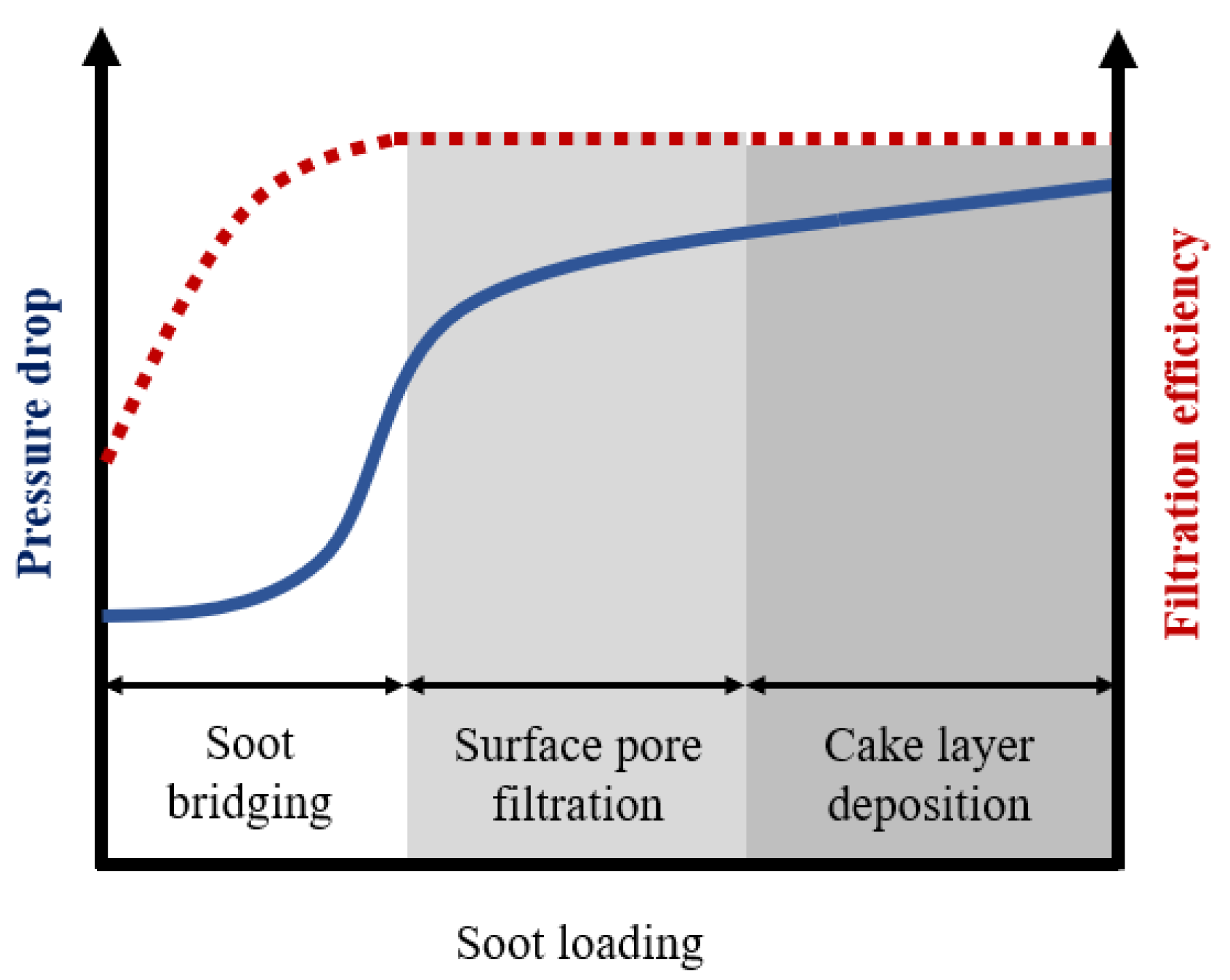
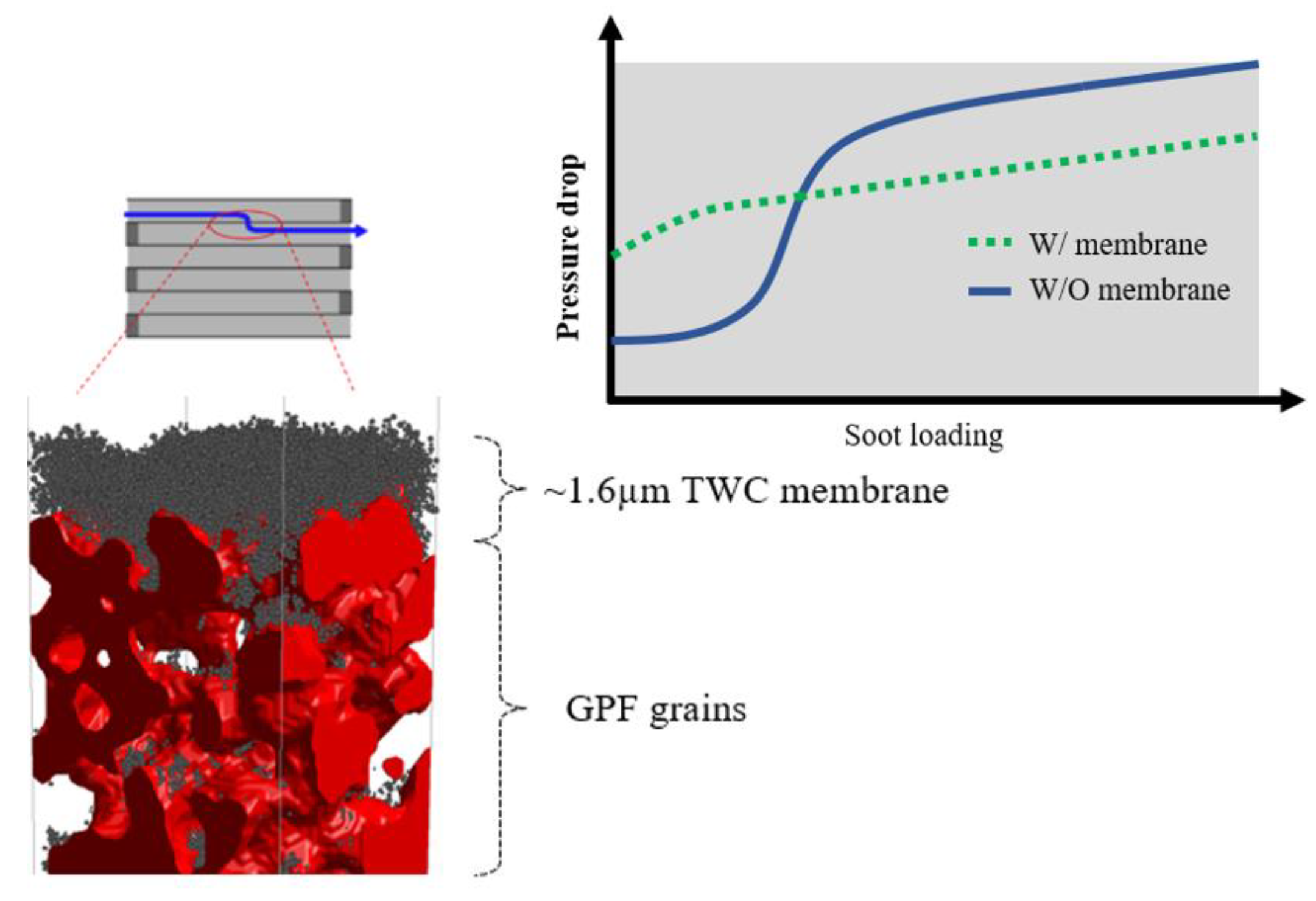
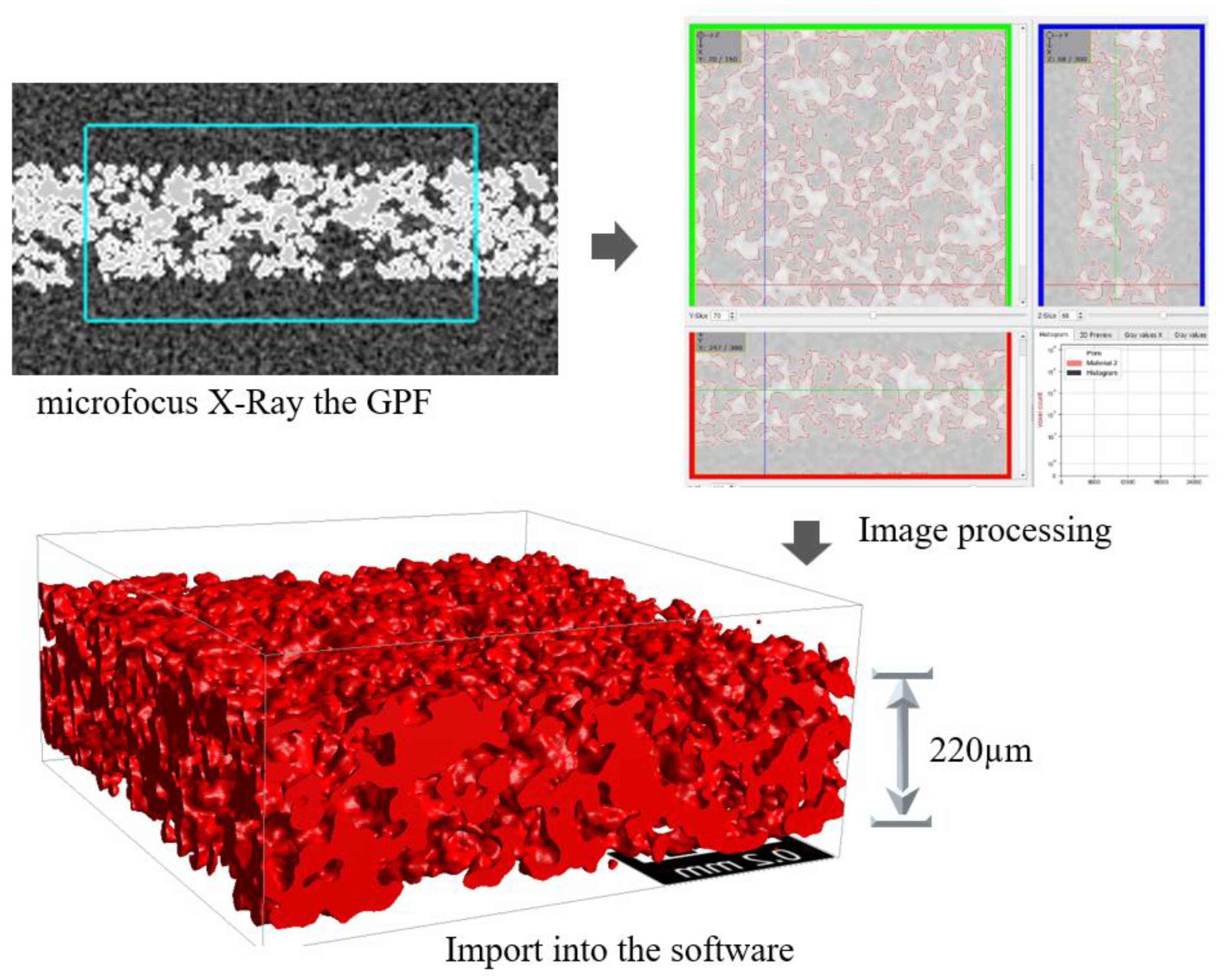
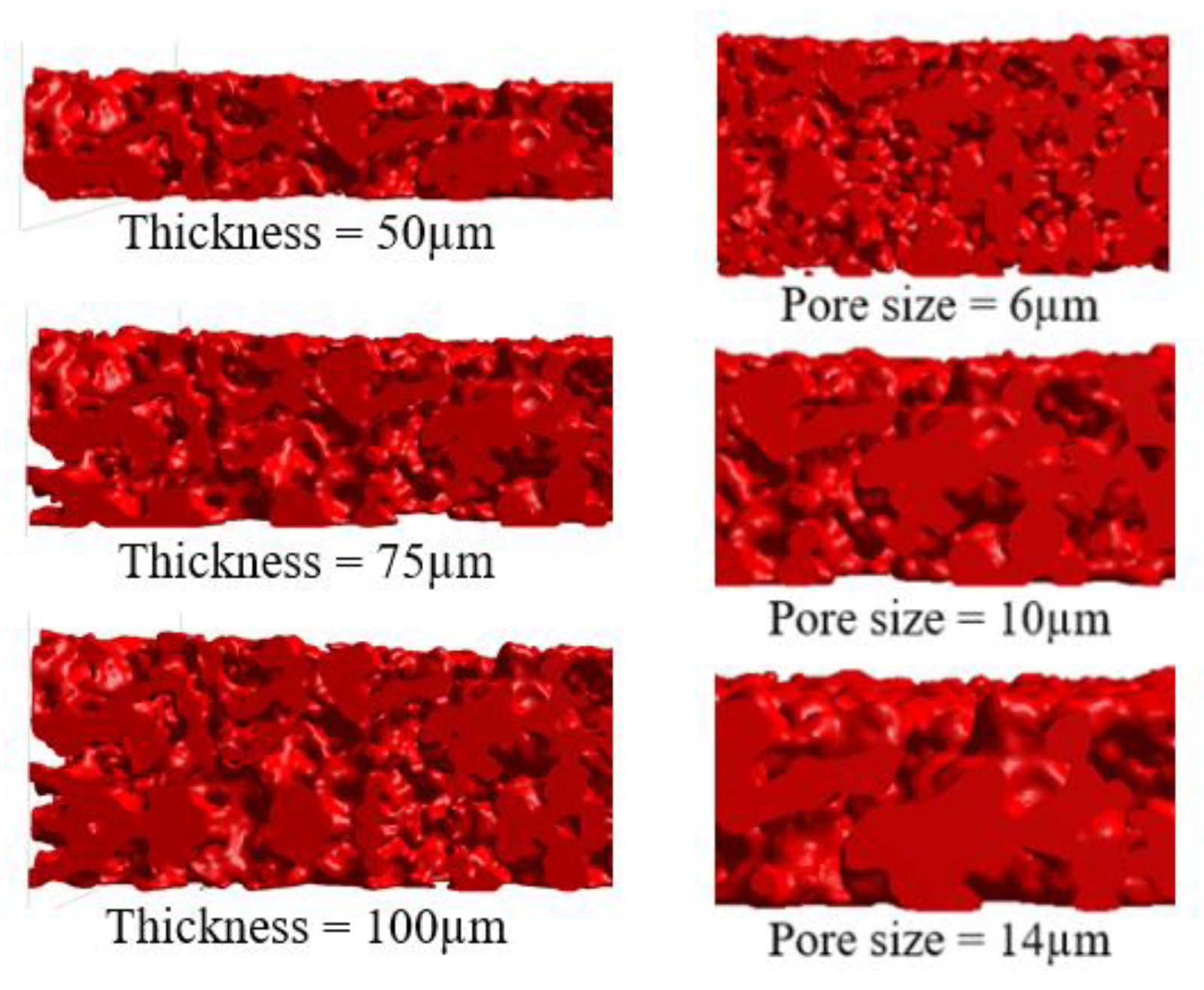
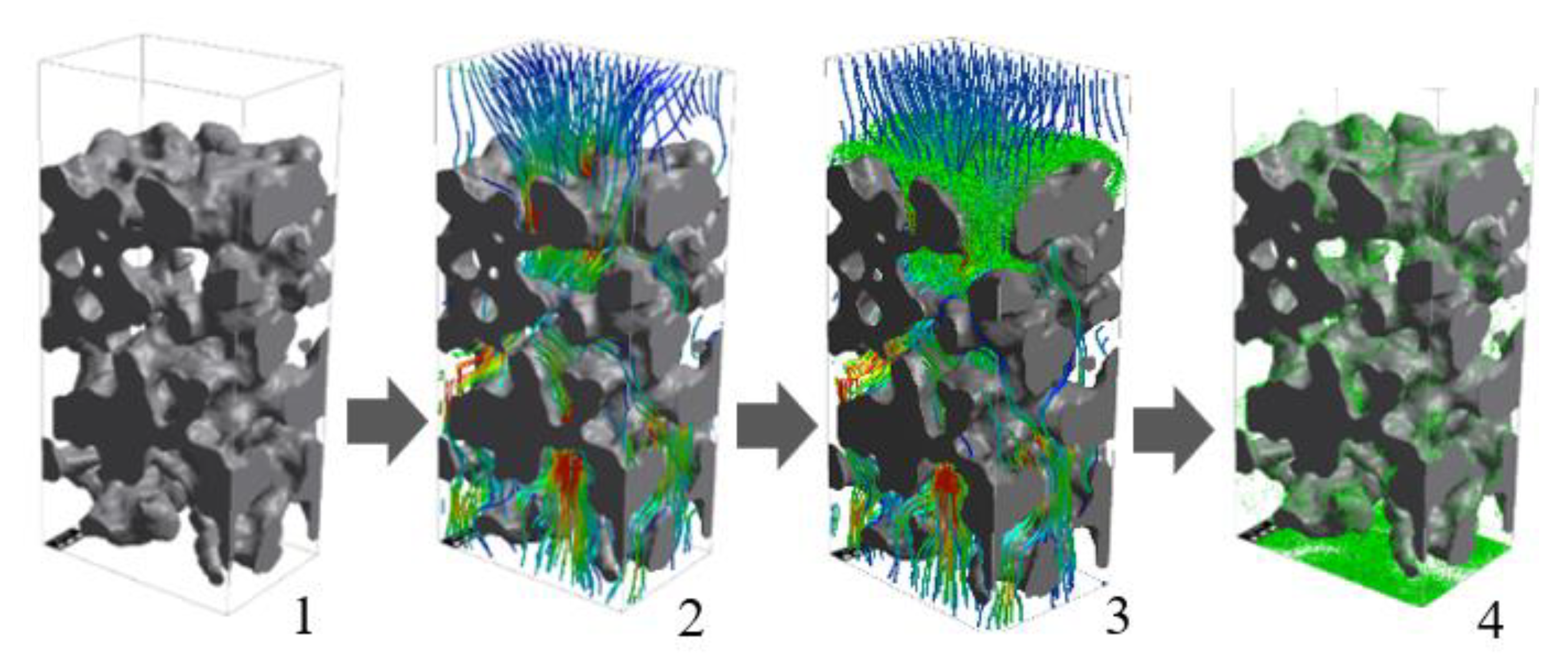

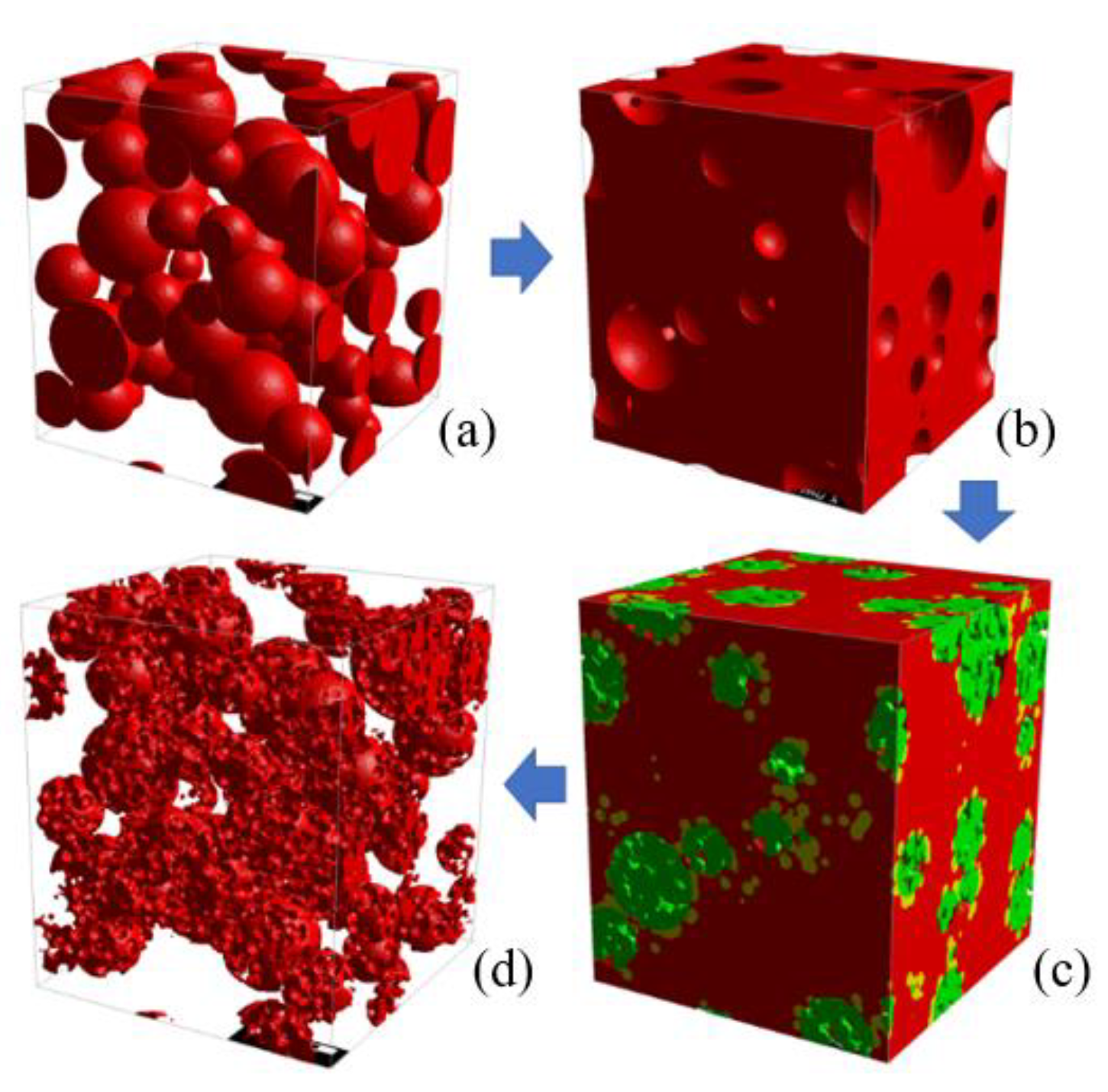

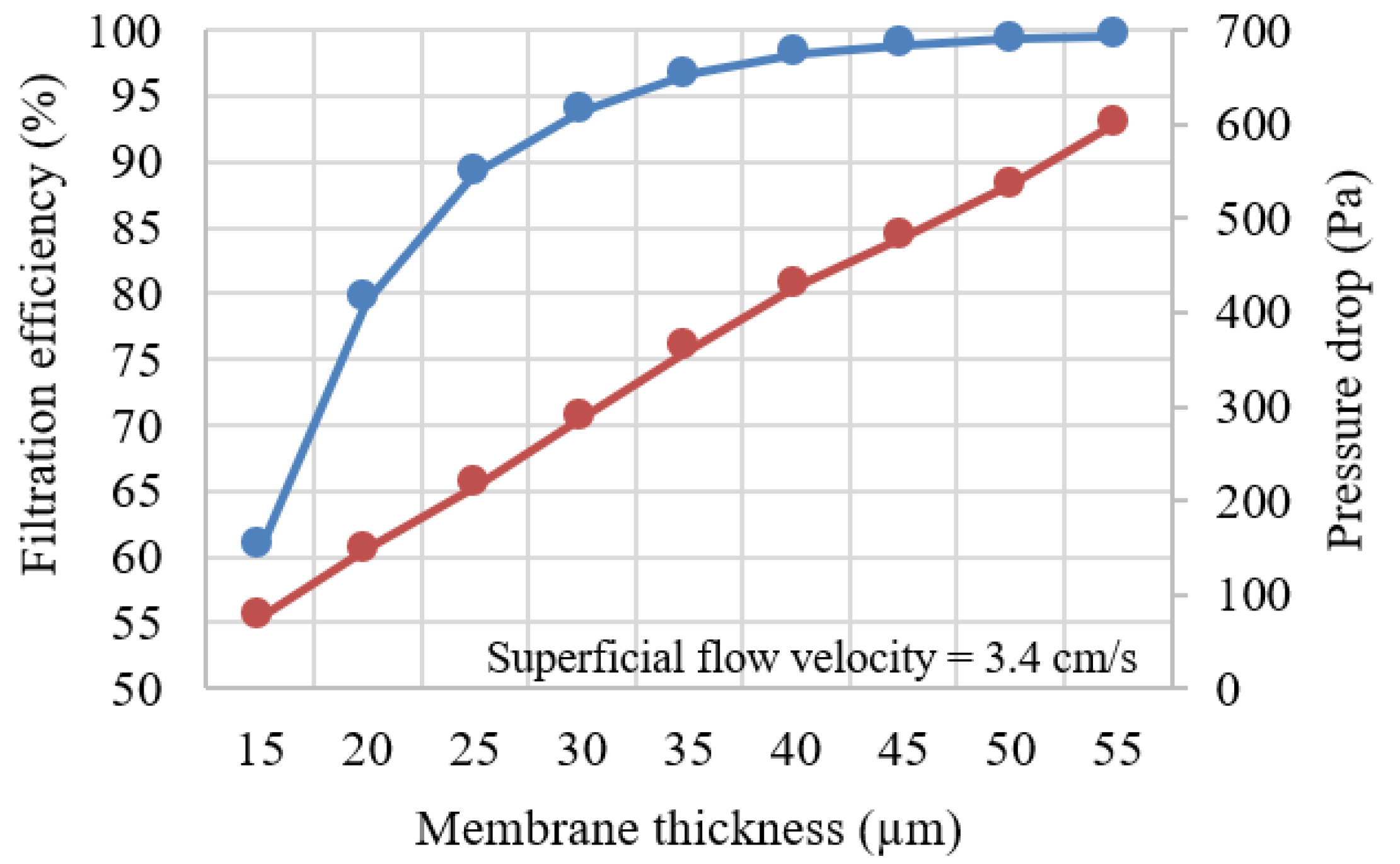
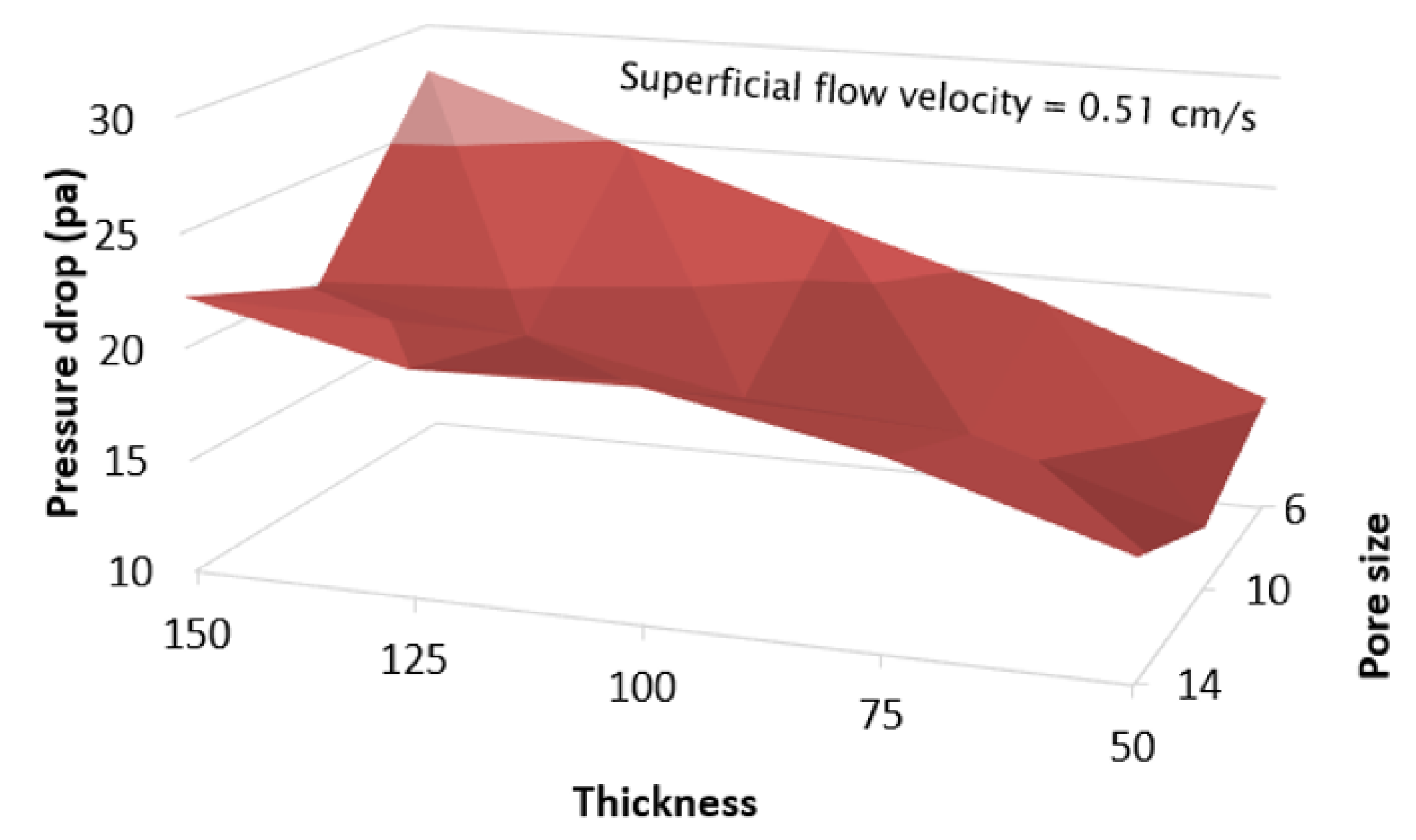
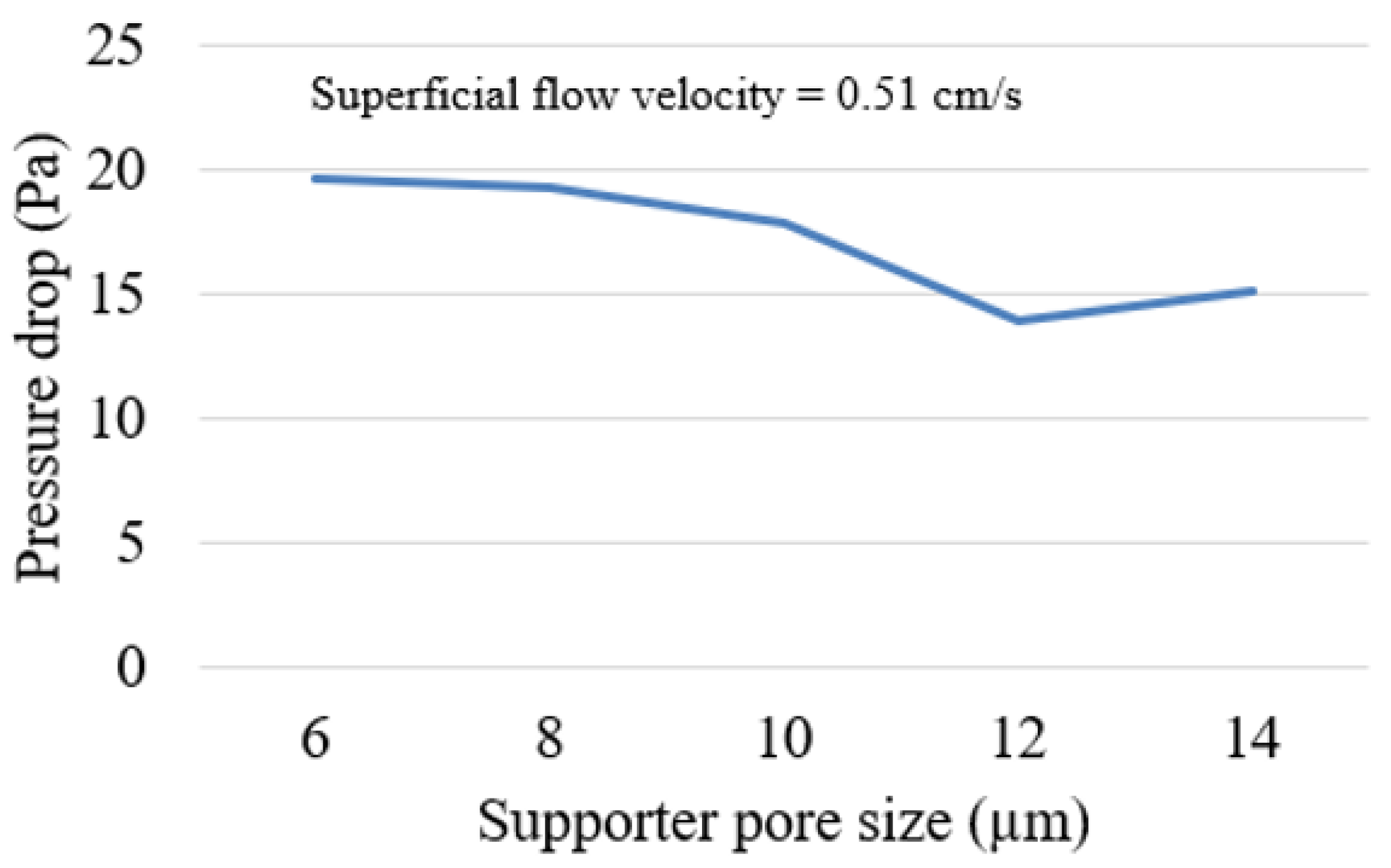



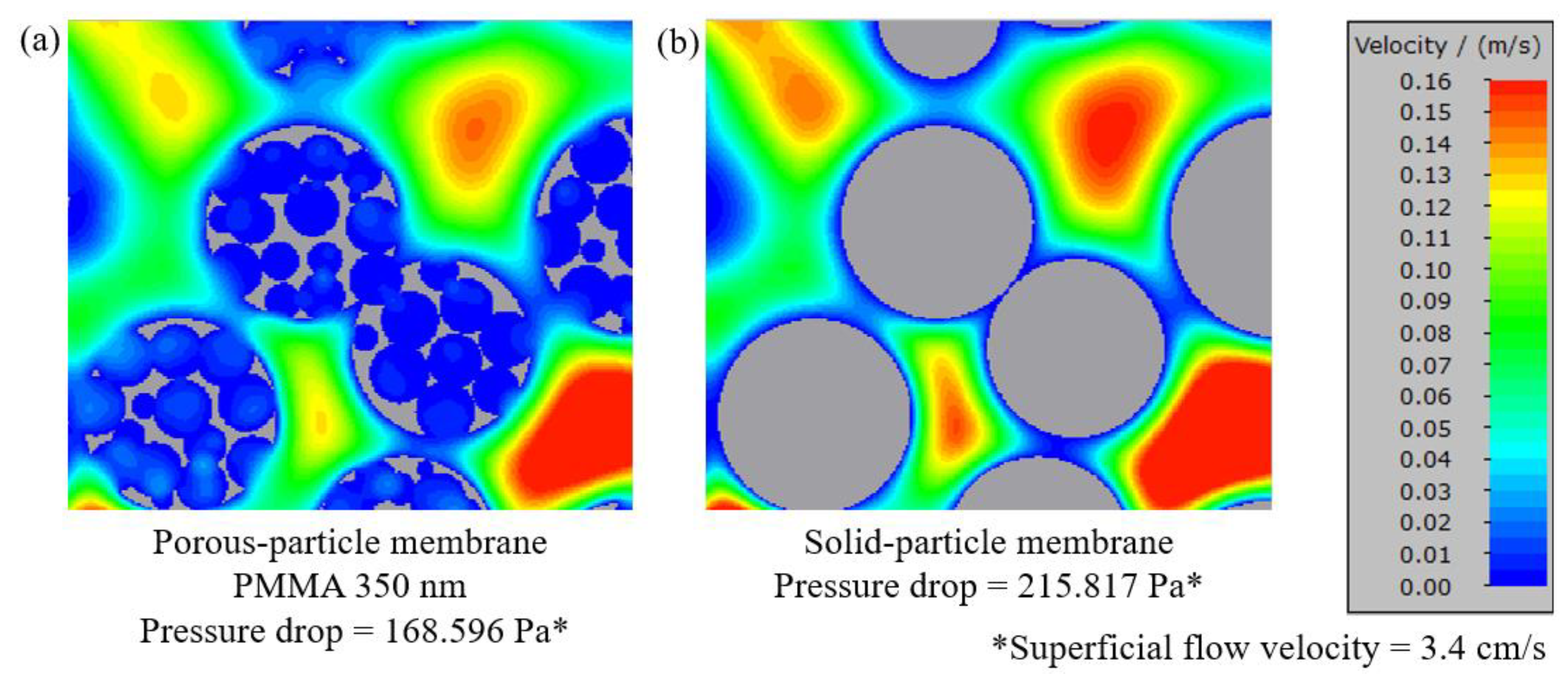

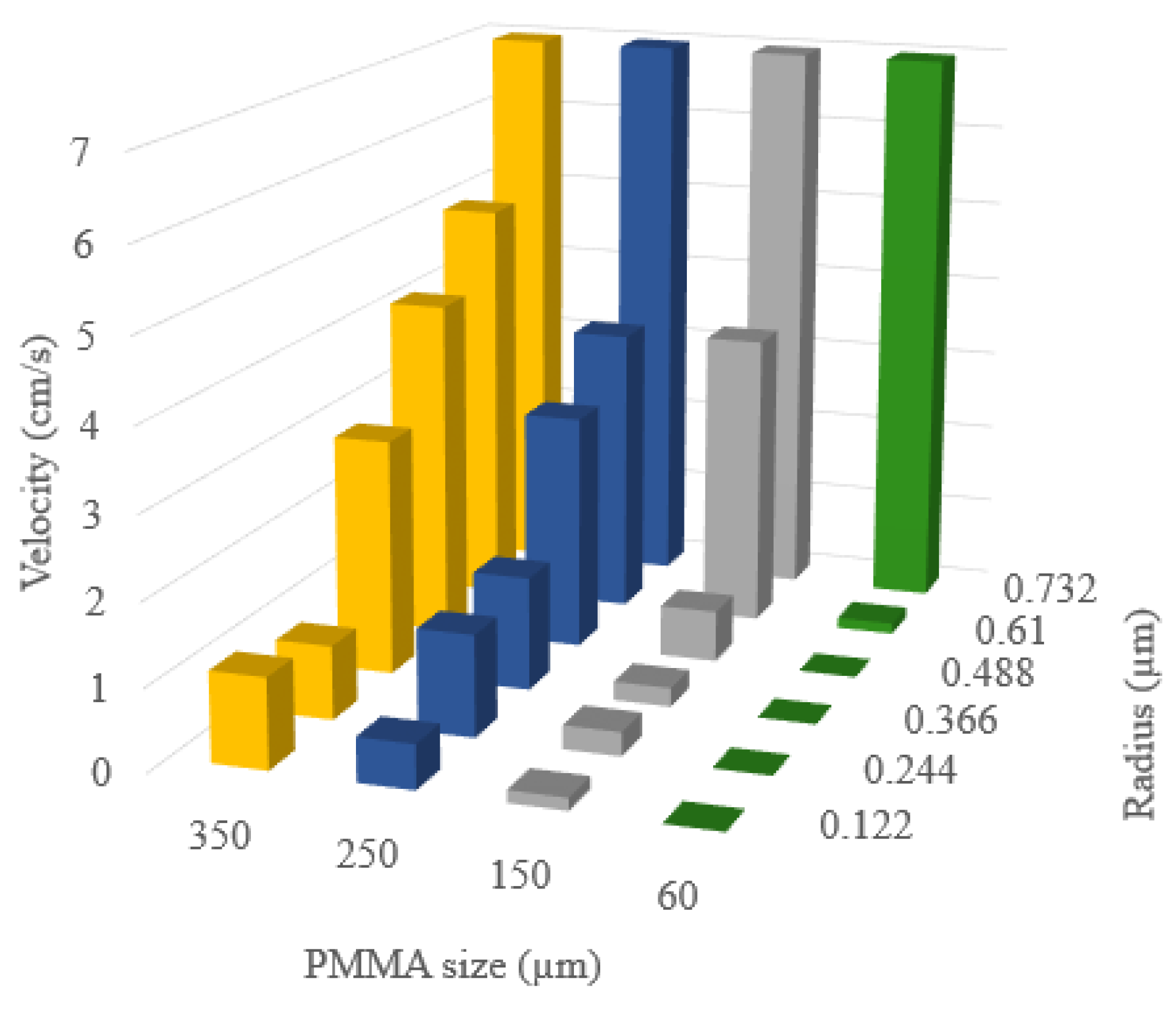
Disclaimer/Publisher’s Note: The statements, opinions and data contained in all publications are solely those of the individual author(s) and contributor(s) and not of MDPI and/or the editor(s). MDPI and/or the editor(s) disclaim responsibility for any injury to people or property resulting from any ideas, methods, instructions or products referred to in the content. |
© 2023 by the authors. Licensee MDPI, Basel, Switzerland. This article is an open access article distributed under the terms and conditions of the Creative Commons Attribution (CC BY) license (https://creativecommons.org/licenses/by/4.0/).
Share and Cite
Suteerapongpun, T.; Hanamura, K. Numerical Design of Granular Support for Three-Way Catalyzed Solid- and Porous-Particles Membrane Filters. Membranes 2023, 13, 644. https://doi.org/10.3390/membranes13070644
Suteerapongpun T, Hanamura K. Numerical Design of Granular Support for Three-Way Catalyzed Solid- and Porous-Particles Membrane Filters. Membranes. 2023; 13(7):644. https://doi.org/10.3390/membranes13070644
Chicago/Turabian StyleSuteerapongpun, Teerapat, and Katsunori Hanamura. 2023. "Numerical Design of Granular Support for Three-Way Catalyzed Solid- and Porous-Particles Membrane Filters" Membranes 13, no. 7: 644. https://doi.org/10.3390/membranes13070644




